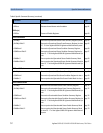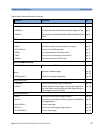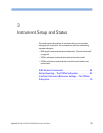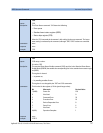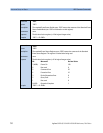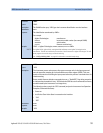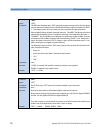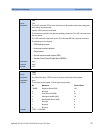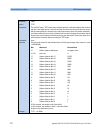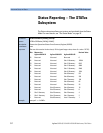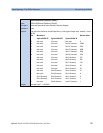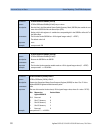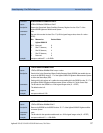
Instrument Setup and Status IEEE-Common Commands
60 Agilent 8163A/B, 8164A/B & 8166A/B Mainframes, Fifth Edition
command:
*OPC?
syntax: *OPC?
description: The OPeration Complete query *OPC? parses all program message units in the input queue,
sets the operation complete bit in the Standard Event Status register, and places an ASCII
’1’ in the output queue, when the contents of the input queue have been processed.
Some module firmware includes commands that set a "StatNOPC" flag during execution to
indicate that the module is busy. If a module is executing a command which generates a
"StatNOPC" flag, the GPIB bus is not blocked to a command to another module. A second
command to a busy module is blocked until the module flag "StatOK" is set. Taking advan-
tage of this feature, and using *OPC? in a loop to query until the instrument returns 1, can
lead to useful gains in program execution efficiency.
The following actions cancel the *OPC? query (and put the instrument into Operation Com-
plete, Command Idle State):
•Power-on
• the Device Clear Active State is asserted on the interface.
•*CLS
•*RST
parameters: none
response: 1<END> is returned if all modules are ready to execute a new operation.
0<END> is returned if any module is busy.
example: *OPC? → 1<END>
command:
*OPT?
syntax: *OPT?
description: The OPTions query *OPT? returns the modules installed in your instrument.
parameters: none
response: Returns the part number of all installed modules, separated by commas.
Slots are listed starting with the lowest slot number, that is, slot 0 for the Agilent 8164A/B
and Slot 1 for the Agilent 8163A/B and Agilent 8166A/B.
If any slot is empty or not recognised, two spaces are inserted instead of the module’s part
number. See the example below, where slots 1 and 4 are empty.
example: *OPT? → 81682A , , 81533B, 81532A, <END>



